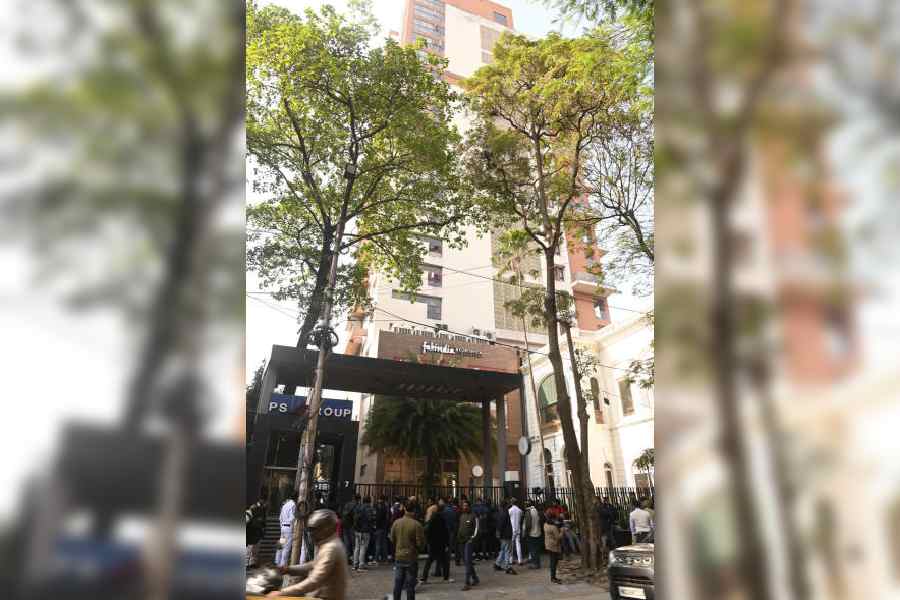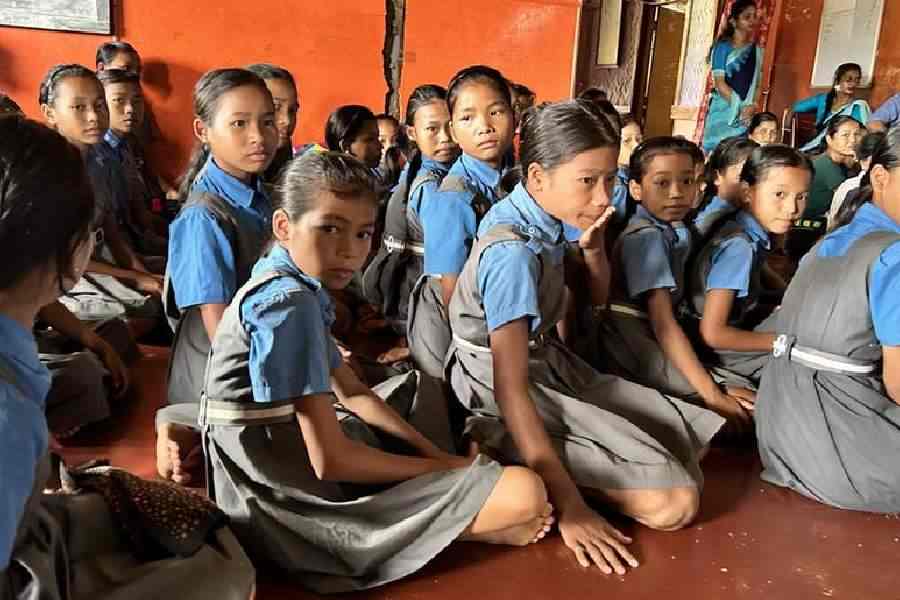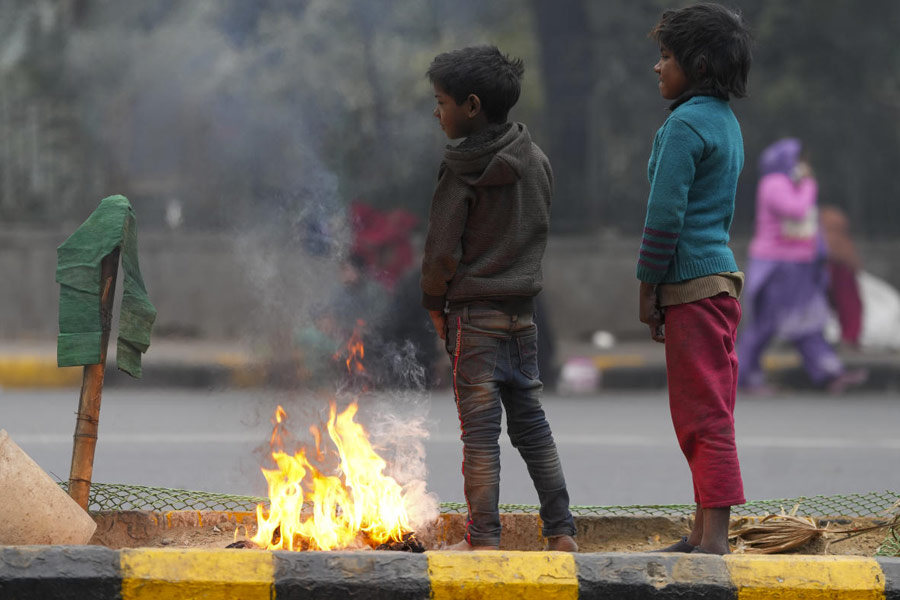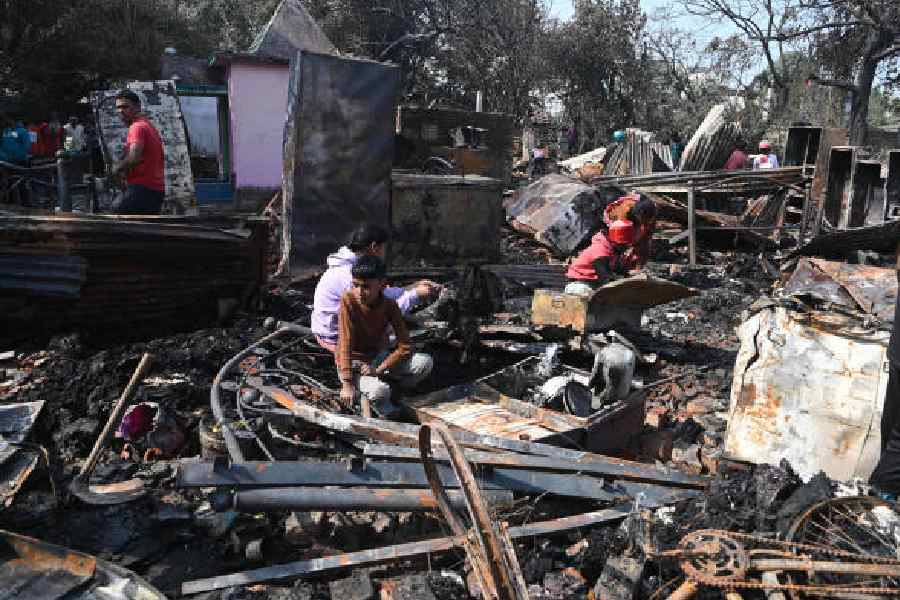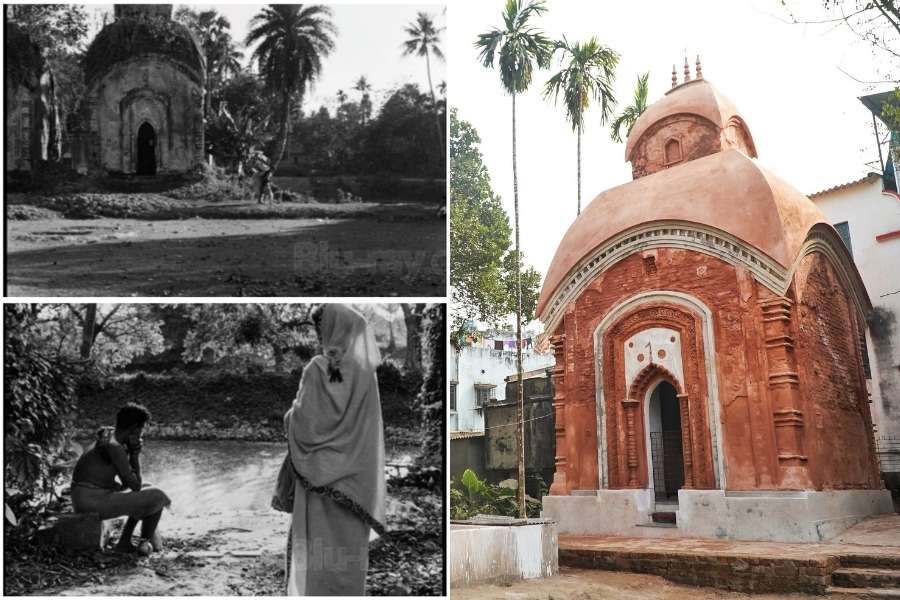 |
| Randall McLeod reads between the lines. Picture by Bishwarup Dutta |
He reads between the lines, beside and beneath too, and finds messages that the lay reader is certain to miss or pass over. He cranes his neck, holds the page against the light and even reads it upside down — all in search of clues left behind by the printing hammer.
Professor Randall McLeod studies printed texts and has invented a stereoscopic device called the McLeod Portable Collator, for comparing texts as images. The scholar, recently retired from the department of English, University of Toronto, was giving an illustrated talk on the history of book production at the National Library.
He explained how “the message reshaped the medium”. The inked metal types stamped themselves on the paper, creating recesses in it that made the printed part gain in surface area. But the surface area of the margins remained the same. To reconcile the tension, the central part of the paper got bent and buckled, like potato chips. So they had to be hammered during the binding process.
“But the paper does not want to be hammered,” he smiles. The sparks of rebellion left behind on the printed pages are what a printing history sleuth like McLeod is after.
In the course of a two-hour lecture, McLeod showed examples of how some letters get tilted, do not print, some print lower than they should or on another page altogether and some leave a hole. “If the ink is wet, the hammer will pick up little postage stamp sizes of information and paste them elsewhere. Thus we find the book talking to itself,” he said, explaining his reconstruction of the choreography of hammering in a series of books from the Renaissance right down to cheap Indian reprints of classics in the market now.
He showed the audience how to find hidden impressions. “A world of Renaissance literature lies in the dark. Beam your torchlight from the side on a page and watch its surface from the side with your eyes at an acute angle to it, ” he said. An example was how the embossed word “Amen” (see picture) appeared when viewed thus in a Thomas Aquinas Latin text. “I first thought this was a naughty intrusion by the printers into the boss’s work. But the spiritual nature of the text made me realise they too considered themselves to be doing God’s work,” he said.
 |
| Konkona Sensharma in 15, Park Avenue where she plays a person with schizophrenia |
Tribute to sister
Filmmaker Aparna Sen shared her personal experience with schizophrenia at an awareness programme organised by NGO Turning Point at Dakshin Kalikata Sansad Club on January 16 and 17. Sen said she had depicted schizophrenia in her film 15, Park Avenue.
“It was a tribute to Sohini, my sister,” she added. Some of her other films like Paromitar Ekdin and Mr and Mrs Iyer also had characters with the disorder. Sen felt her sister helped her understand such patients better.
The seminar, held over two days, had an interactive sessions on the rehabilitation of patients with mental ailments. The participants included psychiatrist and wife of US Consul General Jane Thompson, psychiatrist Rima Mukherjee and former disability commissioner Supriyo Gupta, among others. The last day of the seminar included the screening of a short film on schizophrenia by filmmaker Abhishek Ganguli.
German hamper
Young local artists need a boost to stay and work in Calcutta, felt Martin Waelde, the director of Max Mueller Bhavan.
“They should be given an alternative platform such as neighbourhood galleries to showcase their work,” said Waelde, in town for “an unprecedented” second stint.
The German sees Calcutta as “a huge, complex laboratory” of social life, architecture, arts, history, economy and politics.
The director also stressed the need to evolve new formats and opt for “new areas”, such as the telephone theatre that the Rimini Protocol group did during his first tenure, a project he is planning to bring back.
Waelde is looking forward to the city highlights of the Germany and India Year 2011-12. The German Film Orchestra Babelsberg will play compositions by A.R. Rahman as well as Bollywood music and historic German film music (January 24, Science City auditorium). Leading contemporary German choreographer Sasha Waltz will be back with her ensemble repertoire.
 |
Ode to Dickens
The British Council is hosting a number of events to celebrate the bicentenary of writer Charles Dickens.
At the Calcutta Book Fair, author Vikram Seth will inaugurate the series of events on January 26 . A special collection of Dickens’s books will be on display at the British Council Reading Room at the fair. A host of writers will talk about Dickens: on January 30 Craig Taylor will be in conversation with author Amit Chaudhuri and Sujata Sen, the director of British Council, East India, on a writer’s relationship with the city.
The British Council in India has invited contemporary Indian writers in English to comment on what they feel Dickens would have written today. An all-India creative writing competition will be held in collaboration with Penguin India for young writers between 16 and 21.
A collection of seven films based on or inspired by Charles Dickens will be screened in all major cities.
 |
Right relation
Conversation overheard at a Salt lake cha-er adda on a January morning:
A: Look, the city has turned into London. It is as cold, grey and rainy.
B: But what about the people? They don’t look like Londoners.
A: Your didi will change them too.
B: Why “your” didi? What is she to you?
A: Pishi (aunt).
(Contributed by Sudeshna Banerjee, Arshia Dhar, Subhro Saha and Chandrima S. Bhattacharya)





